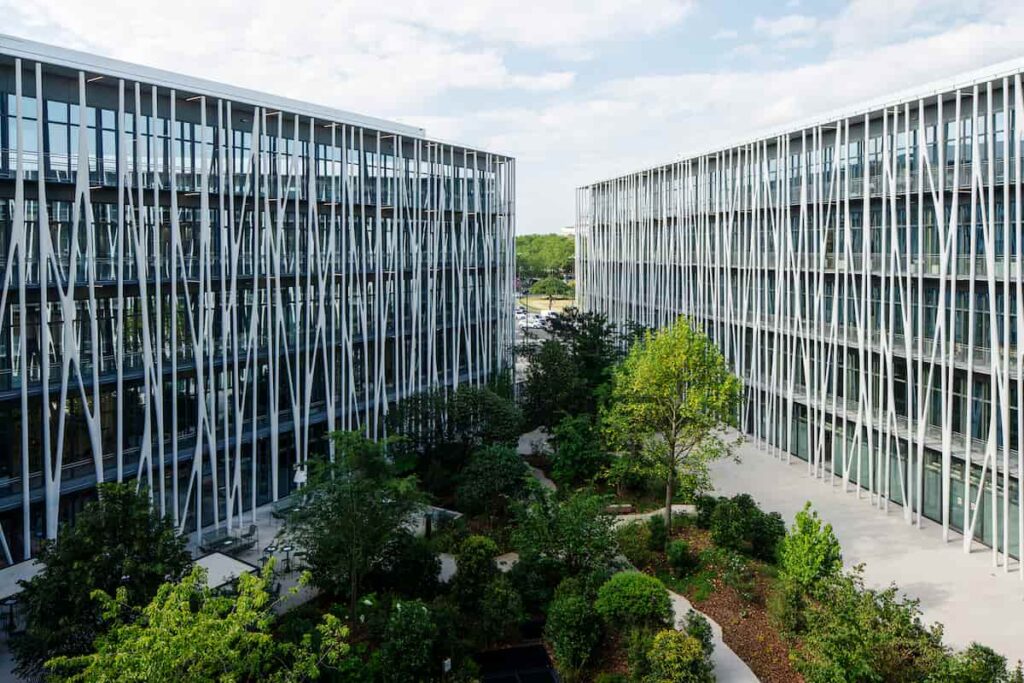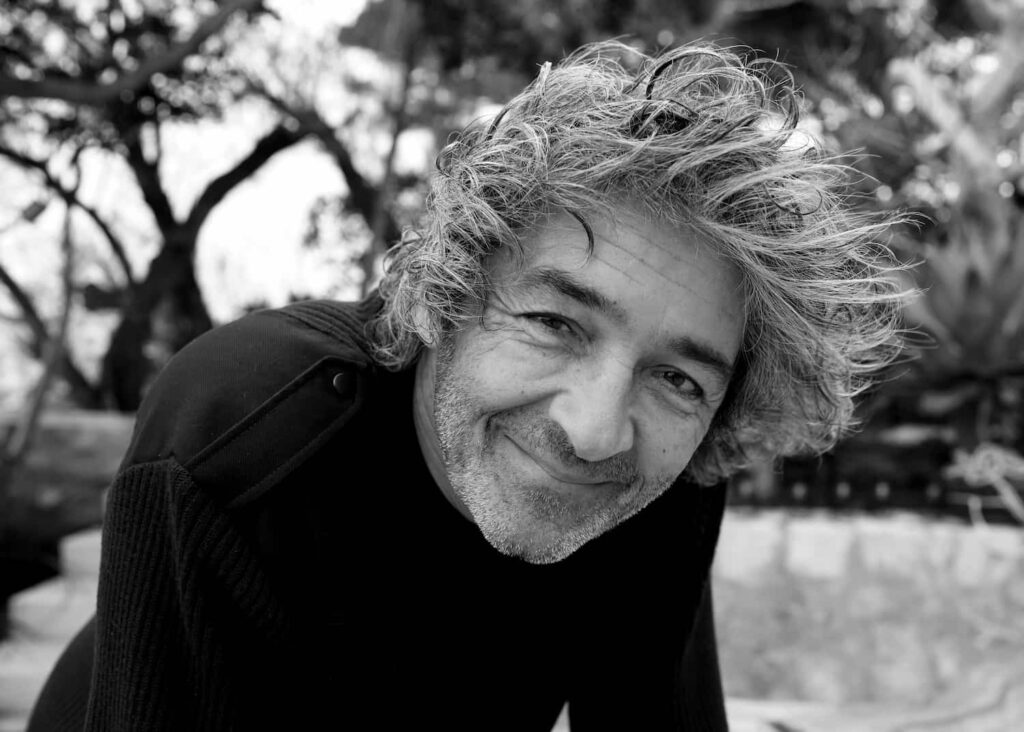
Rudy Ricciotti is a well-known French architect and engineer, celebrated for his bold and innovative work in architecture, especially his use of concrete. Born in Algiers, Algeria, on August 22, 1952, he later pursued his education in architecture and engineering in Switzerland and France. He graduated from the Higher Technical School of Geneva in 1975 and the School of Architecture in Marseille in 1980.
Rudy Ricciotti
From early on, Ricciotti showed a passion for combining strong design ideas with deep technical knowledge. His style is expressive and modern, yet always grounded in real craftsmanship and materials. At EliteX, we are proud to have Rudy Ricciotti as part of the edition: 05 Visionary Architects Reshaping the Future of Architecture in 2025.
Throughout his career, Ricciotti has received many awards and honors that recognize his talent and influence in the field of architecture. These include the Grand Prix National d’Architecture in 2006, the Médaille d’or de l’Académie d’architecture, and several other prestigious titles, such as being a member of the Académie des technologies, a Commandeur of the Ordre des Arts et des Lettres, and a Chevalier of the Légion d’honneur. These recognitions show the respect he commands in both the artistic and technical worlds.
“Every building should tell a story. It must speak to people, to their emotions, to their culture.”
Ricciotti is often described as a pioneer of concrete. He believes in using the material in ways that are not only structurally sound but also aesthetically powerful. He has created many buildings where concrete is more than just a supporting structure—it is a central feature that gives identity and emotion to the space. He pushes the limits of the material, giving it lightness, elegance, and beauty that surprises many people.
One of his earliest notable projects was the Vitrolles Stadium in 1994, which showed his strong design language and creative use of materials. This was followed by many other remarkable works, including the National Choreographic Center in Aix-en-Provence, known as the Black Pavilion, built in 2006. This project highlighted his talent for blending culture and architecture.
Among his most famous works is the Jean Cocteau Museum in Menton, completed in 2011. This building is a striking example of how architecture can become a piece of art. Another major achievement was the design of the Department of Islamic Arts at the Louvre Museum in Paris, finished in 2012. This project required great sensitivity and technical skill, as it had to respect the historical context while adding a bold and modern feature.
In 2013, Ricciotti completed two more significant buildings: the MuCEM (Museum of European and Mediterranean Civilizations) in Marseille and the Jean Bouin Stadium in Paris. The MuCEM is particularly famous for its intricate concrete latticework, which filters light and creates a poetic link between land and sea. It has become a landmark not just for the city but for modern museum design in general.
Ricciotti’s portfolio also includes infrastructure projects, like the Bridge of the Republic in Montpellier, completed in 2014, which combines elegance and utility. He also worked on places of memory and reflection, such as the Camp de Rivesaltes Memorial, opened in 2015, which honors the victims of war and displacement.
His more recent works continue to show his creative force. The Bordeaux Métropole Arena in Floirac and the Humanist Library in Sélestat are examples of how he blends culture, function, and design. In 2019, he delivered the Contemporary Music-Hall in Aix-en-Provence, and in 2020, he worked on the redesign of the Nantes Train Station. In 2021, he completed le19M, a unique fashion craft center created for Chanel in Paris. In 2024, he finished the headquarters of the Fédération Nationale de la Mutualité Française, based in Paris, adding another high-profile project to his career.
Rudy Ricciotti is also the author of numerous books and pamphlets, including Insoumission, published by Éditions Albin Michel – 2025, Manifeste légionnaire – 88 pas-minute au service de la démocratie published by Nbe Editions – 2021, Le Beau, le brut et les truands (conversation with Paul Chemetov) published by Textuel – 2021, Premières lignes published by Cassis Belli – 2019, L’exil de la beauté published by Textuel – 2019, Le béton en garde à vue published by Lemieux Éditeur – 2015, En vain published by Jannink – 2014, Conversations imaginaires “ou pas” published by un autre Reg’Art – 2014, L’architecture est un sport de combat published by Textuel – 2013, HQE published by Le Gac Press – 2013.
“I use concrete not just for strength, but for poetry—it’s a material with soul.”
Ricciotti’s influence extends far beyond France. Internationally, he has worked on important buildings such as the Philharmonie Nikolaisaal in Potsdam, Germany, completed in 2000, and the Peace Bridge in Seoul, South Korea, finished in 2002. In Belgium, he designed the “La Boverie” International Center of Art and Culture in Liège, a museum that beautifully blends art and architecture. In Brazil, he was involved in the design of the AYA tertiary complex in the Cidade Matarazzo in São Paulo, completed in 2021.
Apart from his architectural work, Ricciotti is also a prolific writer. He uses books and essays to share his ideas about design, society, and the role of architecture in public life. Some of his works include Insoumission (2025), Manifeste légionnaire (2021), L’exil de la beauté (2019), and L’architecture est un sport de combat (2013). His writings are often provocative, challenging the norms of modern architecture and defending creativity, craftsmanship, and cultural expression.


Rudy Ricciotti is not just an architect but a thinker, artist, and cultural voice. He often says that “architecture is a combat sport,” meaning that architects must fight to protect the beauty and values of their work in a world that often prefers easy solutions or standard designs. He believes deeply in the responsibility of architects to shape society through buildings that speak to people’s emotions, history, and hopes for the future. His agency, based in Bandol, France, continues to work on major public and private projects. The team brings together professionals who share Ricciotti’s passion for architecture that is bold, poetic, and rooted in materials. Each project is treated as a unique opportunity to create something meaningful.
Ricciotti’s legacy lies in his refusal to compromise. He stays true to his belief that buildings should be more than just practical—they should be inspiring. His love for concrete, his poetic sense of space, and his fearless ideas have made him one of the most important voices in architecture today.
From sports halls to museums, from memorials to stations, from France to Brazil, Rudy Ricciotti continues to shape the world with buildings that are expressive, innovative, and deeply human.
“Architecture is a combat sport. You have to fight to protect creativity, beauty, and purpose.”
